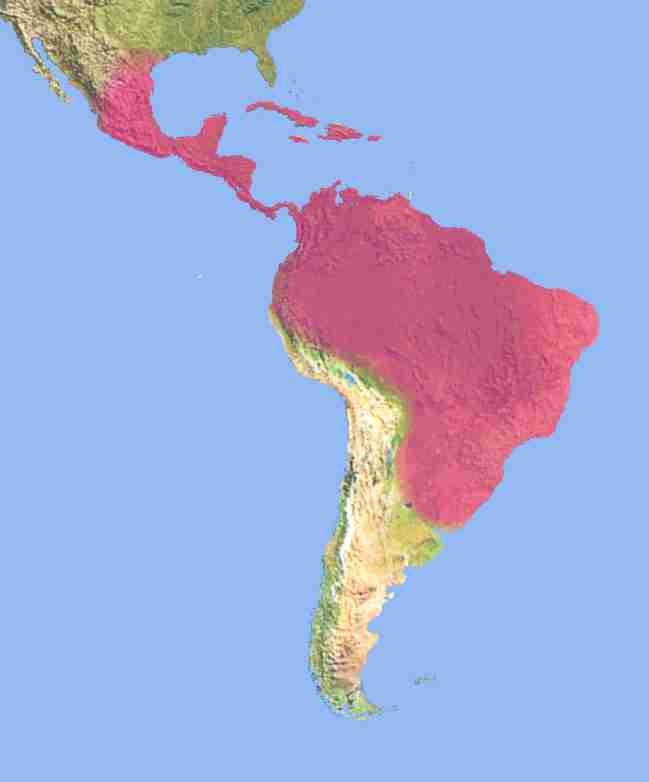
Selenicereus
(Berg)Br&R
◊ Contr. Nat. US Herb. 12:429 (1909)
◊◊ as subsection of Eucereus Berg - Rep. Miss. Bot. Gard. 16:76 (1905)
Hylocereus (Berg)Br&R - Contr. Nat. US Herb. 12:428 (1909)
Werckleocereus Br&R - Contr. Nat. US Herb. 12:432 (1909)
Wilmattea Br&R - Cact. 2:195 (1920)
Mediocactus Br&R - Cact. 2:210 (1920)
Marniera Backbg p.p. - CSJ(USA) 22:153 (1950)
Cryptocereus Alex - CSJ(USA) 22(6):164 (1950)
Pseudoselenicereus Innes - Handbook Cacti & Succ. 31, 34 nom. inval.
art. 36.1 (1978)
Type: Cactus grandiflorus L
- Slender, climbing cerei with rather long stems, ribbed or angled,
irregularly forming aerial roots. Areoles small, usually with short spines or
bristles. Flowers large, nocturnal. Ovary and receptacle usually with hair
and bristles or with spines. Receptacle rather long, slightly bend. Upper
scales and outer petals narrow, green, brown, red or orange. Inner petals
broad, white. Filaments in two rows. Style long, thick, often hollow. Fruit
reddish, with dehiscent spines, hairs and bristles. Seed 2-4 mm long, brown
tot black brown.
- Southern Texas to northern South America, Caribian, Brazil, Paraguay.
Miss. Bot. Gard. 72 (Hylocereus) (1905)
Cact. 2:183 (Hylocereus)
Cact. 2:196
Cact. 2:210 (Mediocactus)
Cact. 2:216 (Werckleocereus)
Backeberg 2:773 (Werckleocereus)
Backeberg 2:774
Backeberg 2:793 (Mediocactus)
Backeberg 2:803 (Hylocereus)
CSMex. 28(2):41-48 (Hylocereus)
KuaS 8():113-116, 133-136 (Werckleocereus)
Bravo 1:446' (Hylocereus)
Bravo 1:459
Bravo 1:483 (Werckleocereus)
Succulenta 57(8):166-171" (Cryptocereus)
Taxon 40(4):627-628 (1991) (Mediocactus)
Bradleya 4:65; 7:89-96 (Werckleocereus, Hylocereus)
Bradleya 7:89-96; 9:81-92
Cact. Syst. Init. 17:9, 43-50; 36:29-36 (Hylocereus)
Ann. Bot. 94(4):527-534 (2004)
NCL 262
CEB 194 (Hylocereus)
CEB 198
Phytotaxa 327(1):1-46 (2017)
Phytotaxa 69(4):251 (2018)
◊ Contr. Nat. US Herb. 12:429 (1909)
◊◊ as subsection of Eucereus Berg - Rep. Miss. Bot. Gard. 16:76 (1905)
Hylocereus (Berg)Br&R - Contr. Nat. US Herb. 12:428 (1909)
Werckleocereus Br&R - Contr. Nat. US Herb. 12:432 (1909)
Wilmattea Br&R - Cact. 2:195 (1920)
Mediocactus Br&R - Cact. 2:210 (1920)
Marniera Backbg p.p. - CSJ(USA) 22:153 (1950)
Cryptocereus Alex - CSJ(USA) 22(6):164 (1950)
Pseudoselenicereus Innes - Handbook Cacti & Succ. 31, 34 nom. inval.
art. 36.1 (1978)
Type: Cactus grandiflorus L
- Slender, climbing cerei with rather long stems, ribbed or angled,
irregularly forming aerial roots. Areoles small, usually with short spines or
bristles. Flowers large, nocturnal. Ovary and receptacle usually with hair
and bristles or with spines. Receptacle rather long, slightly bend. Upper
scales and outer petals narrow, green, brown, red or orange. Inner petals
broad, white. Filaments in two rows. Style long, thick, often hollow. Fruit
reddish, with dehiscent spines, hairs and bristles. Seed 2-4 mm long, brown
tot black brown.
- Southern Texas to northern South America, Caribian, Brazil, Paraguay.
Miss. Bot. Gard. 72 (Hylocereus) (1905)
Cact. 2:183 (Hylocereus)
Cact. 2:196
Cact. 2:210 (Mediocactus)
Cact. 2:216 (Werckleocereus)
Backeberg 2:773 (Werckleocereus)
Backeberg 2:774
Backeberg 2:793 (Mediocactus)
Backeberg 2:803 (Hylocereus)
CSMex. 28(2):41-48 (Hylocereus)
KuaS 8():113-116, 133-136 (Werckleocereus)
Bravo 1:446' (Hylocereus)
Bravo 1:459
Bravo 1:483 (Werckleocereus)
Succulenta 57(8):166-171" (Cryptocereus)
Taxon 40(4):627-628 (1991) (Mediocactus)
Bradleya 4:65; 7:89-96 (Werckleocereus, Hylocereus)
Bradleya 7:89-96; 9:81-92
Cact. Syst. Init. 17:9, 43-50; 36:29-36 (Hylocereus)
Ann. Bot. 94(4):527-534 (2004)
NCL 262
CEB 194 (Hylocereus)
CEB 198
Phytotaxa 327(1):1-46 (2017)
Phytotaxa 69(4):251 (2018)